


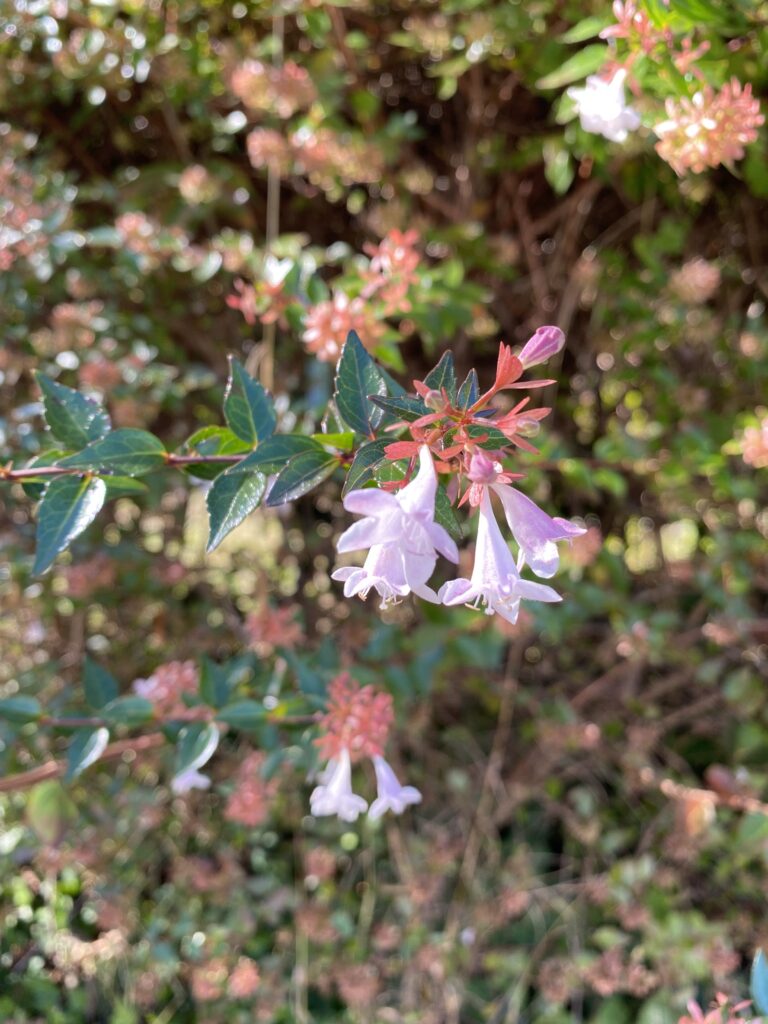


1、2Cerasus serrulata (Japanese: satozakura) is a tree endemic to Japan. Many horticultural varieties have been improved from the native species. Cherry trees bloom in spring, but their leaves fall off in autumn, giving the trees a beautiful appearance.
3,4 Abelia × grandiflora (Japanese: Hanatsukubane-utsugi/ Aberia) is a shrub about 2 m tall that is planted in gardens and along streets in Japan. It flowers from spring to autumn and attracts butterflies and bees, especially in summer when there are no flowers. I remember as a child watching bee after bee visit this tree, which was planted in my garden on the border of my neighbour’s house.
5、6Trailing lantana (Japanese: seiyo-santanka/ kobano-rantana) is a small shrub used in school yards, hedgerows and other environments where soil quality is inconsistent. It is a very beautiful flower.


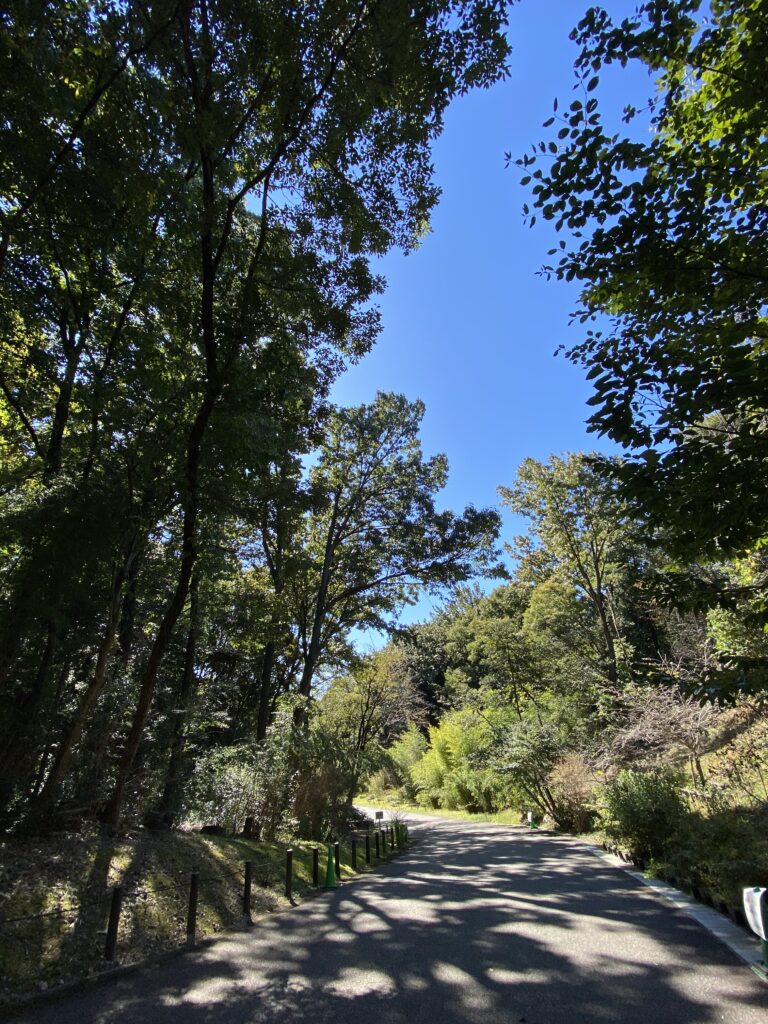



7Moss on rock faces. Still lush in autumn. Moss is a very important way of looking at the state of the environment.
8bicolor lespedeza (Japanese: yama-hagi) This bicolor lespedeza is still green; the one shown at the Higashiyama Botanical Garden① on 29/10/2023 had completely changed colour. There may be differences in where it grows, or individual differences.
9Blue sky seen from the shade of the trees! The towering trees look even more beautiful.
10,11,12Hibiscus syriacus (Japanese: mukuge) is native to China and was cultivated in Japan in the 8th century. There are many garden species and in Korea it is brewed into tea and eaten. In China, the bark is dried and used as a medicine.

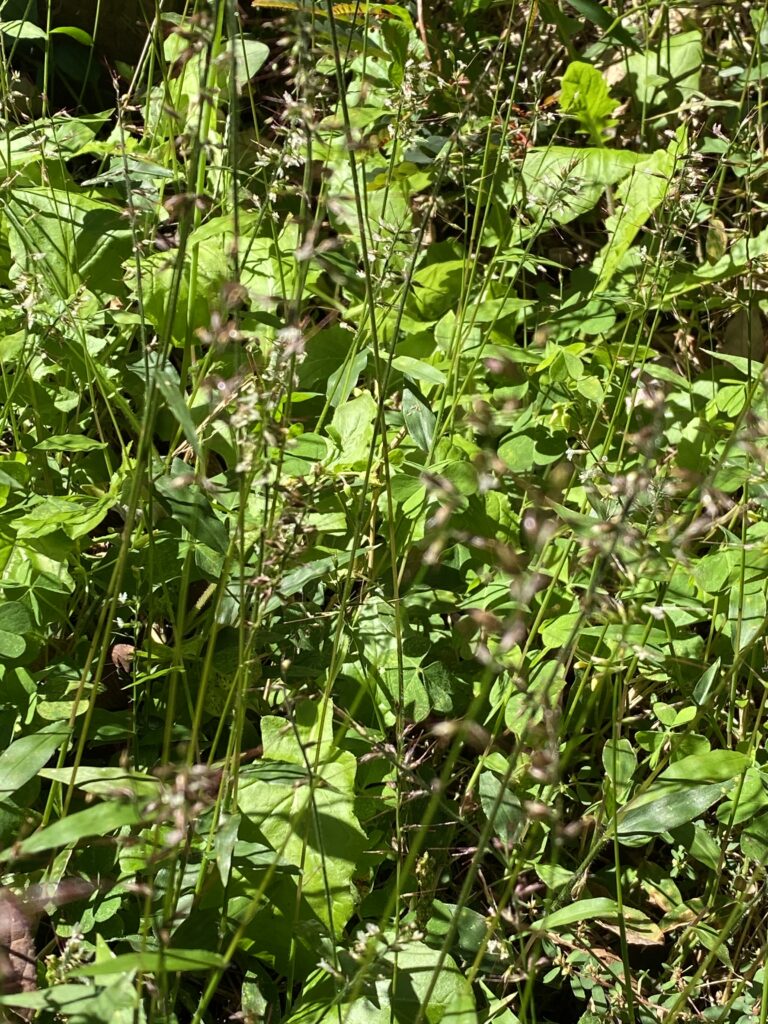


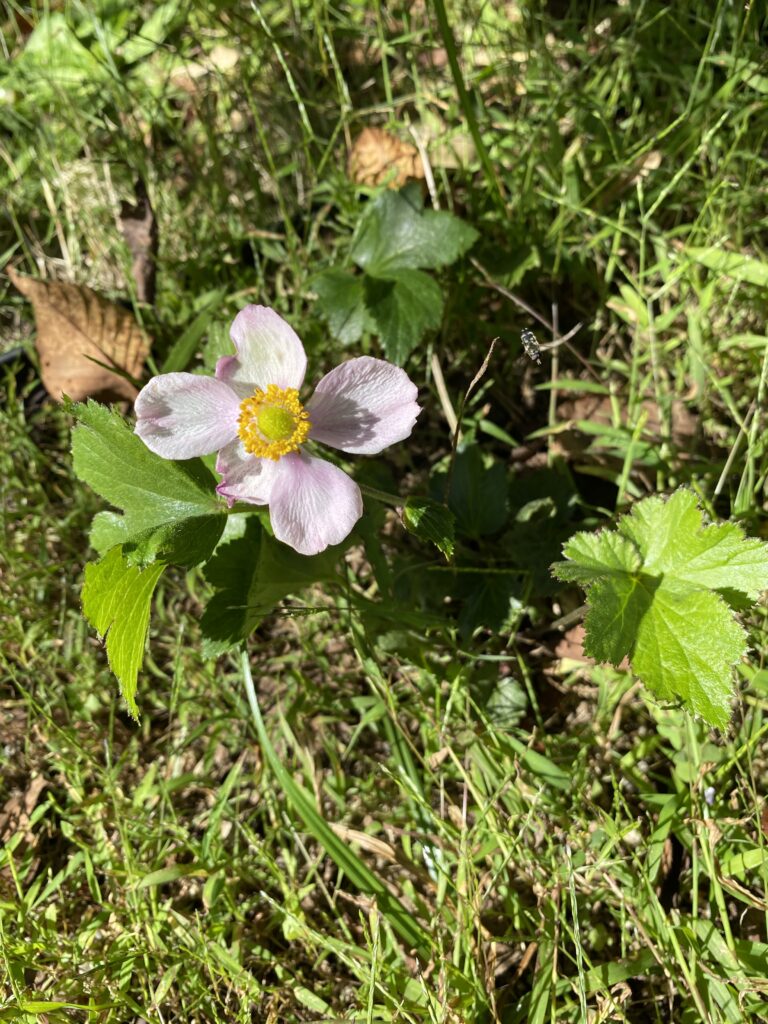

13Persicaria longiseta/Creeping Smartweed (Japanese: Inutade) is a plant that grows widely throughout Eurasia. It is a conspicuous grass with red berried ears from summer to autumn. It is considered a weed, but is very pretty.
14、15Oplismenus hirtellus/Wavyleaf basketgrass (Japanese: chijimi-zasa) is native to Australia. I have never seen this plant before. However, this area of the botanical garden was a place where plants native to China were grown, so it must have spread on its own. It is weed-like but has a curious flower.
16Look at the ground. The sun is shining, but the moss is spreading undeterred – Oplimenus hirtellus is also producing some leaves. And you can see from the berries that it is a huge oak tree that is looking down on this.
17Japanese anemone (Japanese: shumei-giku) is called Japanese but is actually native to China. We know that it entered Japan in ancient times. It is a beautiful flower that blooms in autumn.
18Finally, we come to the Chinese plant area, where Chinese plants are intensively planted. Behold. A bamboo forest stretches high into the blue sky.


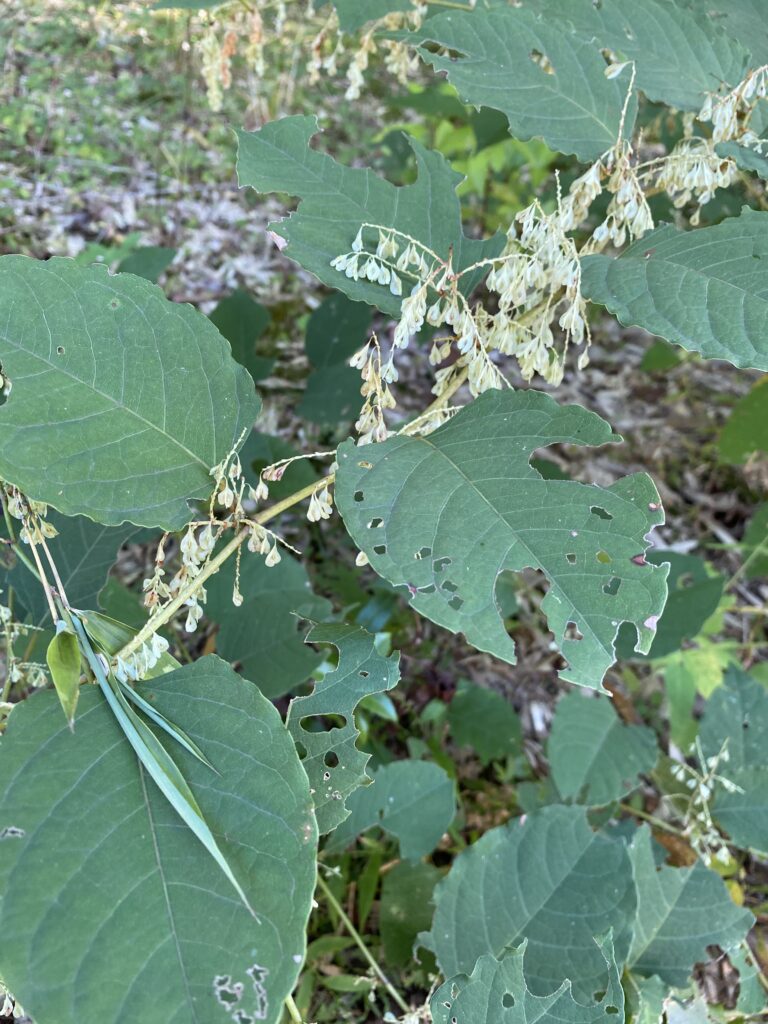



19 Hosta (Japanese: Oba-Giboshi) is native to East Asia. It prefers shady to semi-shady areas and is therefore very useful in shade gardens. It is long-lived, lasting more than 30 years. The flowers are produced from June to August in trumpet-shaped clusters on flower stalks.
20 China is famous for its bamboo. Bamboo has intricate underground stems, so it has been said in Japan: ‘When there is an earthquake, flee to the bamboo forest’. Bamboo forests are refreshing. In Japan, the bamboo forests of Kyoto are particularly famous.
21 Japanese knotweed (Japanese: Itadori) is a very vigorous plant native to East Asia. It was brought to Europe to prevent soil erosion and as food for livestock, but it is so strong that it is listed as one of the 100 worst invasive alien species. In 2020 Amsterdam imported and released 5,000 Japanese Aphalara itadori leaf fleas, exempting them from a strict ban on the introduction of alien species , as one of the measures to contain the knotweed.
22 Why is it that American witch-hazel /Hamamelis (Japanese: America-Mansaku) was growing in the China area? It is definitely a tree of American origin. It is loved for its beautiful autumn leaves.
23 、24 Thuja orientalis (Japanese: Konotegasiwa) is a group of Hinoki cypresses native to northern China. The trees grow 10-50 m tall and have a strong woody fragrance, and have been used as a medicinal ingredient in China.






25,26 Trifoliate orange (Japanese: Karatachi) is native to central China and was introduced to Japan around the 8th century. It is the most cold hardy of all citrus fruits and was used for hedges because of its sharp thorns, but in recent years its thorns have become unpopular and have been replaced by block walls and other structures. Karatachi is used as a rootstock for tangerines and lemons as it bears fruit faster and is more resistant to disease.
27 This tree is a ‘papaya’ according to the Picturethis judgement. Indeed, the leaves, which are divided into two halves, look like papayas. However, papayas are supposedly native to the USA, from southern Mexico to the West Indies. I have no idea why this is growing in the China area. I would like to make further observations.
28、29,30 Aaron’s beard/ Creeping St. John’s wort (Japanese: Hime-Kinshibai/ Seiyo-Kinshibai), as determined by Picturethis. It certainly looks similar when compared to other photos. But Aaron’s beard is supposed to be native to Turkey… why is it growing in the China area? It does not look like a spillover species. This needs to be investigated again.



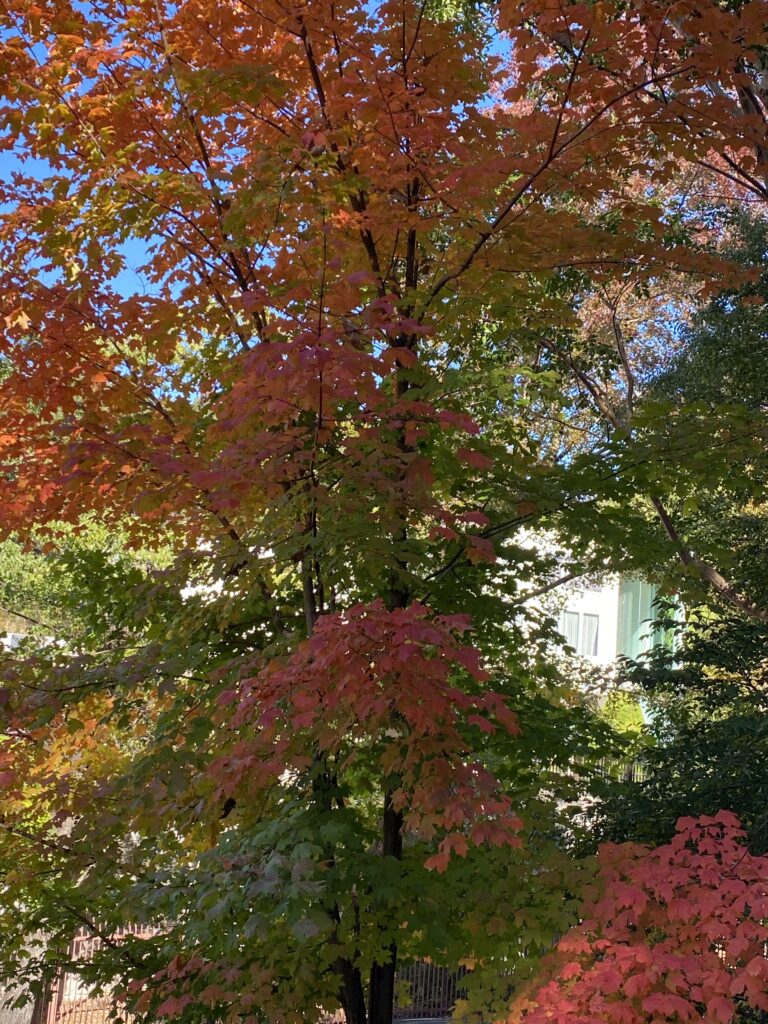


31,32Not much information was available on Euonymus carnosus (Japanese: Chugoku-ohana-mayumi), only on related Japanese species.
33,34,35,36Sugar maple (Japanese: Sato-Kaede) is a famous tree in Canada. It also grows well in Japan. The leaves are beautifully coloured in autumn ahead of the surroundings, but the lower part of the tree still has green leaves.



コメント